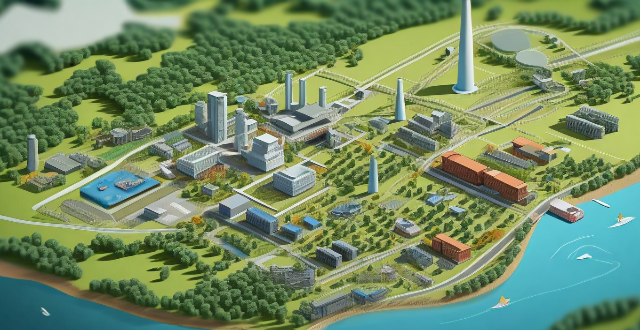To mitigate the effects of climate change, it is crucial that individuals, communities, and governments take action to reduce the impact of climate change on the environment. Some strategies for doing so include reducing greenhouse gas emissions by switching to renewable energy sources and improving energy efficiency, protecting and restoring ecosystems such as forests, wetlands, and grasslands, promoting sustainable land use practices in agriculture and urban planning, encouraging circular economy practices like reducing, reusing, and recycling materials, and supporting clean transportation options like public transit and electric vehicles. These efforts can lead to significant reductions in greenhouse gas emissions and make a positive difference for future generations.

How Can We Reduce the Impact of Climate Change on the Environment?
Introduction
Climate change is one of the most pressing issues facing our planet today. It is caused by the accumulation of greenhouse gases in the atmosphere, primarily carbon dioxide (CO2), which trap heat and cause global temperatures to rise. This warming trend has numerous negative impacts on ecosystems, weather patterns, and human societies. To mitigate these effects, it is crucial that individuals, communities, and governments take action to reduce the impact of climate change on the environment. In this article, we will explore some strategies for doing so.
Main Points
1. Reduce Greenhouse Gas Emissions
- Fossil Fuels: The burning of fossil fuels is a major contributor to greenhouse gas emissions. Reducing our reliance on coal, oil, and natural gas can significantly lower CO2 levels.
- Renewable Energy: Switching to renewable energy sources such as solar, wind, hydroelectric, and geothermal power can help decrease our carbon footprint.
- Energy Efficiency: Improving energy efficiency in buildings, transportation, and industry can also reduce the amount of energy needed and therefore lower emissions.
2. Protect and Restore Ecosystems
- Forests: Trees absorb CO2 from the atmosphere during photosynthesis. Planting more trees and protecting existing forests can help sequester carbon.
- Wetlands: Wetlands are effective at storing carbon in their soils and plants. Restoring and preserving wetlands can contribute to reducing atmospheric CO2 levels.
- Grasslands: Healthy grasslands can also act as carbon sinks through their root systems. Maintaining grassland health is essential for combating climate change.
3. Promote Sustainable Land Use Practices
- Agriculture: Sustainable farming practices, such as crop rotation and reduced tillage, can help maintain soil health and reduce emissions from agricultural activities.
- Livestock Management: Managing livestock more sustainably, including improving feed efficiency and reducing methane emissions from digestion processes, can lessen the environmental impact of agriculture.
- Urban Planning: Designing cities with green spaces, public transportation, and walkability can reduce the need for cars and promote cleaner air.
4. Encourage Circular Economy Practices
- Reduce: Minimize waste by using resources efficiently and choosing products with minimal packaging.
- Reuse: Prefer reusable items over disposable ones to extend the life cycle of products.
- Recycle: Recycle materials whenever possible to keep them out of landfills and reduce the need for new raw materials.
5. Support Clean Transportation Options
- Public Transit: Investing in public transportation systems reduces individual car usage and lowers overall emissions.
- Electric Vehicles: Encouraging the adoption of electric vehicles (EVs) powered by renewable energy can greatly reduce transportation-related CO2 emissions.
- Active Transportation: Promoting walking and biking not only reduces emissions but also promotes healthier lifestyles.
Conclusion
Addressing climate change requires collective effort across all sectors of society. By implementing the above strategies, we can work towards reducing our impact on the environment and mitigating the effects of climate change. It's important to remember that small changes in individual behavior, when multiplied by millions of people, can lead to significant reductions in greenhouse gas emissions and make a positive difference for future generations.